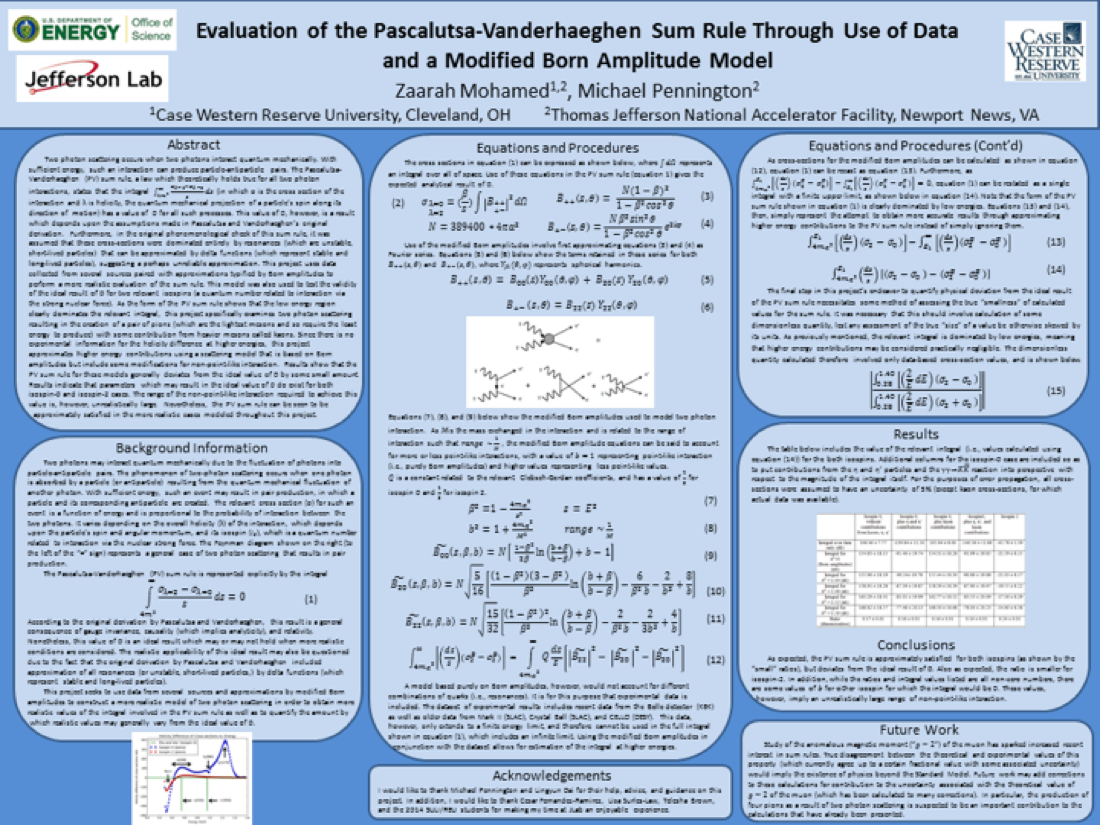Undergraduate Research at Jefferson Lab
Evaluation of the Pascalutsa-Vanderhaeghen Sum Rule Through Use of Data and Modified Born Amplitude Model
Student: Zaarah Mohamed
School: Case Western Reserve University
Mentored By: Michael Pennington
The Pascalutsa-Vanderhaeghen (PV) sum rule is a law which theoretically holds true for all instances of photon scattering. It states that the integral of the helicity-difference cross-section, weighted by the square of energy and integrated from a threshold energy for pair production to infinity, is equal to zero. The original derivation which gives this result is, however, based on the assumption that these cross-sections are dominated by resonances which can be approximated by delta functions, suggesting a perhaps unreliable approximation. This theoretical project seeks to construct a model based on modified Born amplitudes and experimental cross-sections in order to calculate more realistic values of the PV sum rule and to test the ideal result of zero for two relevant isospins. As the integral involved is dominated by low energies, this project focuses on two photon scattering which results in production of a positive pion and a negative pion, which are the lightest mesons and require the least energy to produce. As experimental cross-sections extend to a finite energy limit while the PV sum rule involves an integral to infinity, modified Born amplitudes which account for non-point-like interaction are used to approximate higher energy contributions. Results indicate that, as expected, the PV sum rule for this model generally deviates from the ideal result of zero by some small amount. For both isospins, parameters which would result in the ideal result of zero require an unrealistically large range of non-point-like interaction. Future work may add corrections to these calculations for contribution to the uncertainty associated with the theoretical value of g-2 of the muon.

Citation and linking information
For questions about this page, please contact Education Web Administrator.
